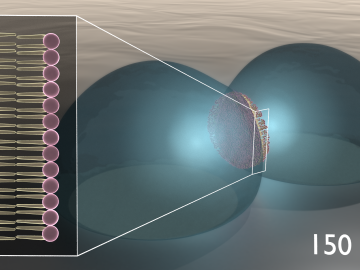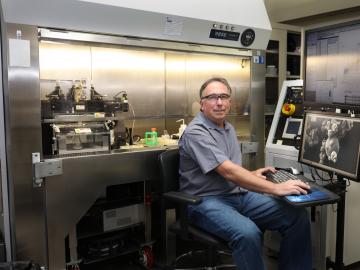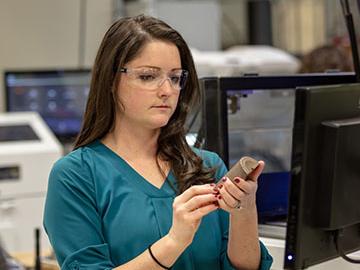Filter News
Area of Research
News Type
Date
News Topics
- 3-D Printing/Advanced Manufacturing (4)
- Advanced Reactors (1)
- Artificial Intelligence (3)
- Bioenergy (5)
- Biomedical (2)
- Clean Water (1)
- Composites (1)
- Computer Science (8)
- Cybersecurity (4)
- Energy Storage (1)
- Environment (4)
- Exascale Computing (1)
- Frontier (2)
- Fusion (2)
- Grid (1)
- Isotopes (1)
- Machine Learning (1)
- Materials Science (7)
- Microscopy (1)
- Nanotechnology (2)
- Neutron Science (6)
- Nuclear Energy (1)
- Physics (2)
- Quantum Science (5)
- Security (2)
- Summit (3)
- Sustainable Energy (5)
- Transportation (2)
Media Contacts

Researchers at the Department of Energy’s Oak Ridge National Laboratory, the University of Tennessee and Texas A&M University demonstrated bio-inspired devices that accelerate routes to neuromorphic, or brain-like, computing.

The U.S. Department of Energy announced funding for 12 projects with private industry to enable collaboration with DOE national laboratories on overcoming challenges in fusion energy development.

ORNL and The University of Toledo have entered into a memorandum of understanding for collaborative research.

Using the Titan supercomputer and the Spallation Neutron Source at the Department of Energy’s Oak Ridge National Laboratory, scientists have created the most accurate 3D model yet of an intrinsically disordered protein, revealing the ensemble of its atomic-level structures.

Scientists at the U.S. Department of Energy’s Oak Ridge National Laboratory have demonstrated a way to isolate and grow targeted bacteria using genomic data, making strides toward resolving the grand challenge of uncultivated microbial “dark matter” in which the vast majority of microorganisms remain unstudied in the laboratory.

Processes like manufacturing aircraft parts, analyzing data from doctors’ notes and identifying national security threats may seem unrelated, but at the U.S. Department of Energy’s Oak Ridge National Laboratory, artificial intelligence is improving all of these tasks.

The National Alliance for Water Innovation, a partnership of the Department of Energy’s Oak Ridge National Laboratory, other national labs, university and private sector partners, has been awarded a five-year, $100 million Energy-Water Desalination Hub by DOE to address water security issues in the United States.

Amy Elliott, an engineer and researcher studying additive manufacturing at the Department of Energy’s Oak Ridge National Laboratory, has been selected as one of 125 AAAS (American Association for the Advancement of Science) IF/THEN Ambassadors.

Three researchers at Oak Ridge National Laboratory will lead or participate in collaborative research projects aimed at harnessing the power of quantum mechanics to advance a range of technologies including computing, fiber optics and network

Quanex Building Products has signed a non-exclusive agreement to license a method to produce insulating material from ORNL. The low-cost material can be used as an additive to increase thermal insulation performance and improve energy efficiency when applied to a variety of building products.




